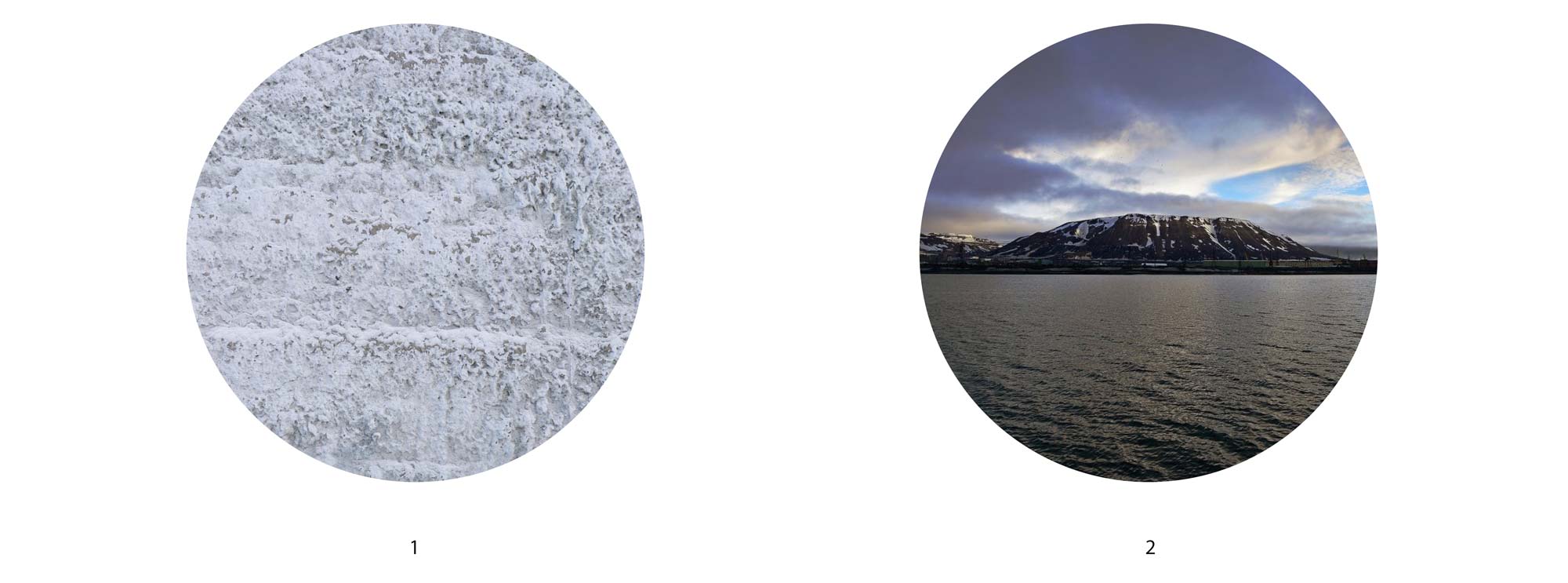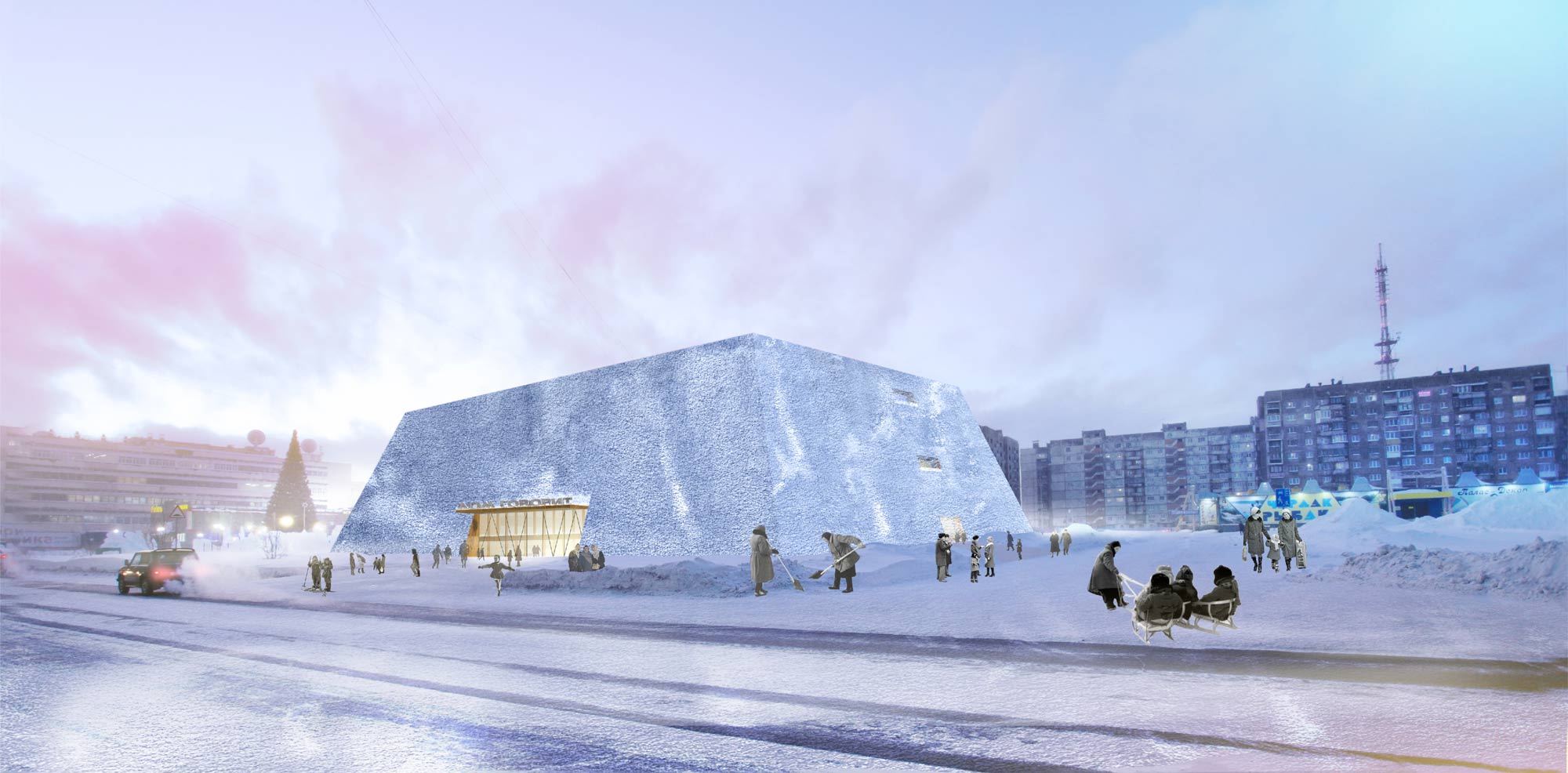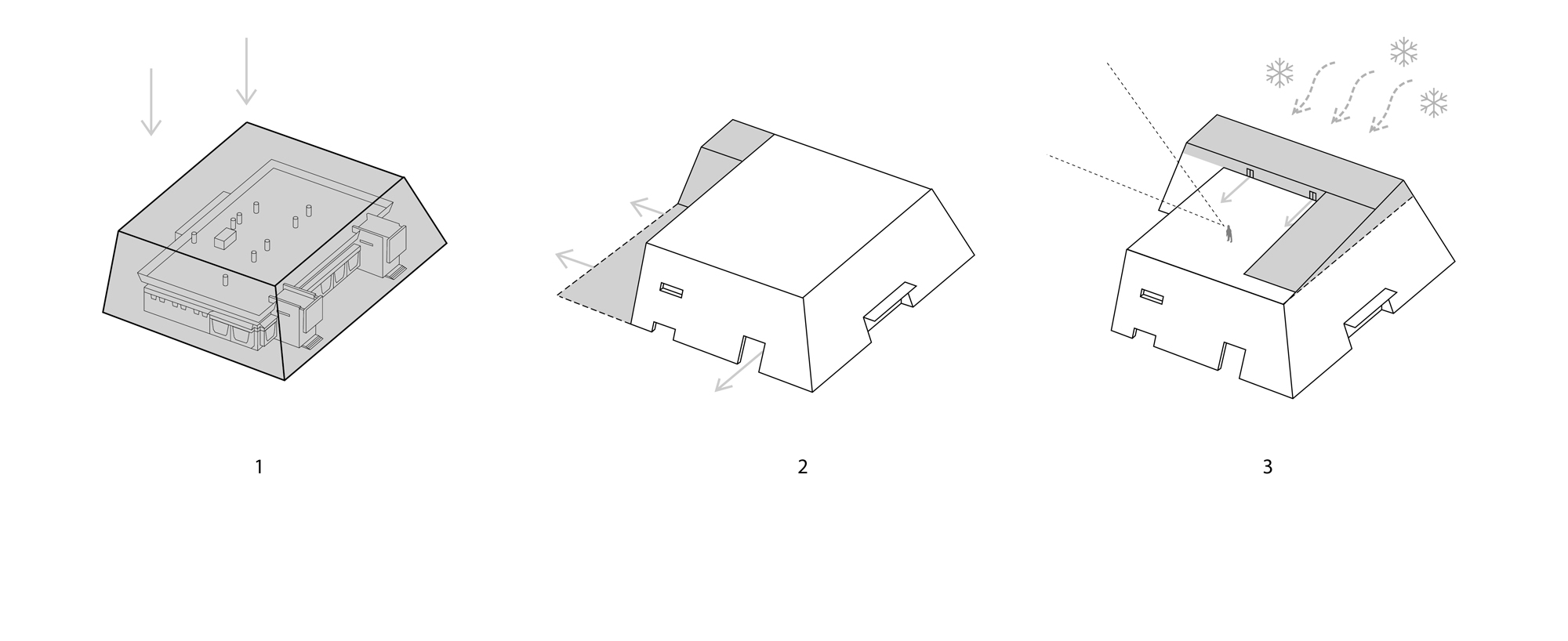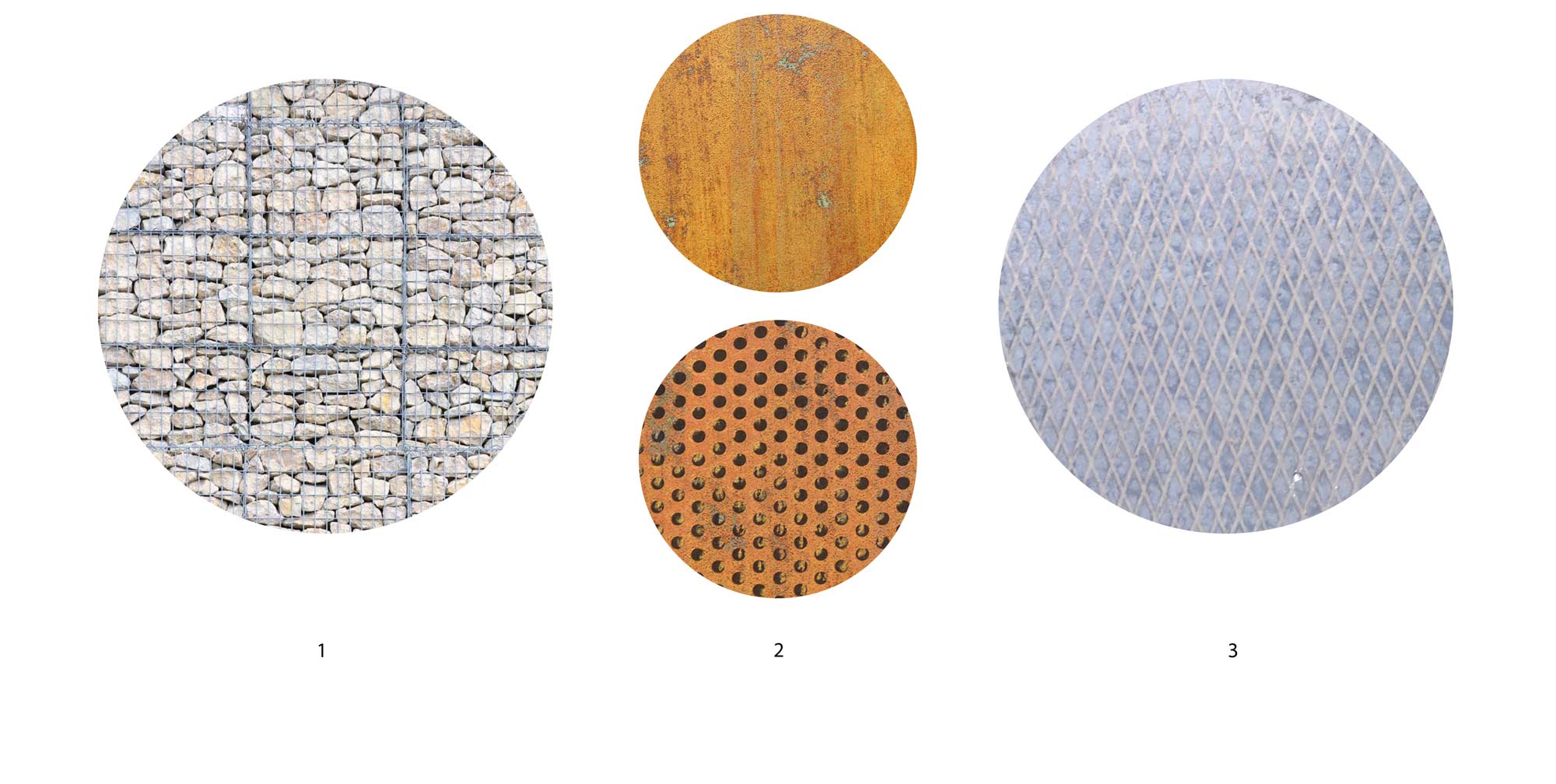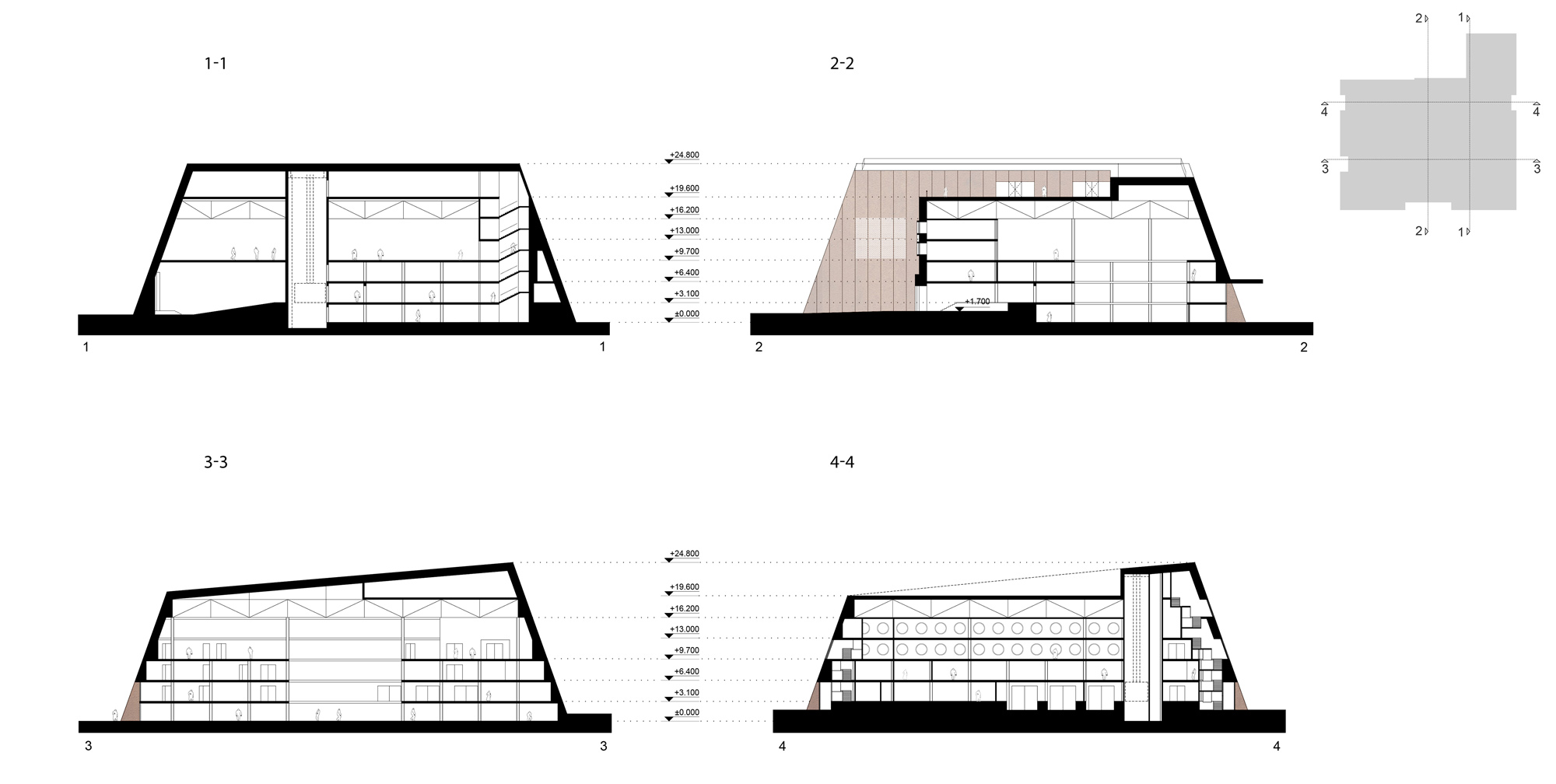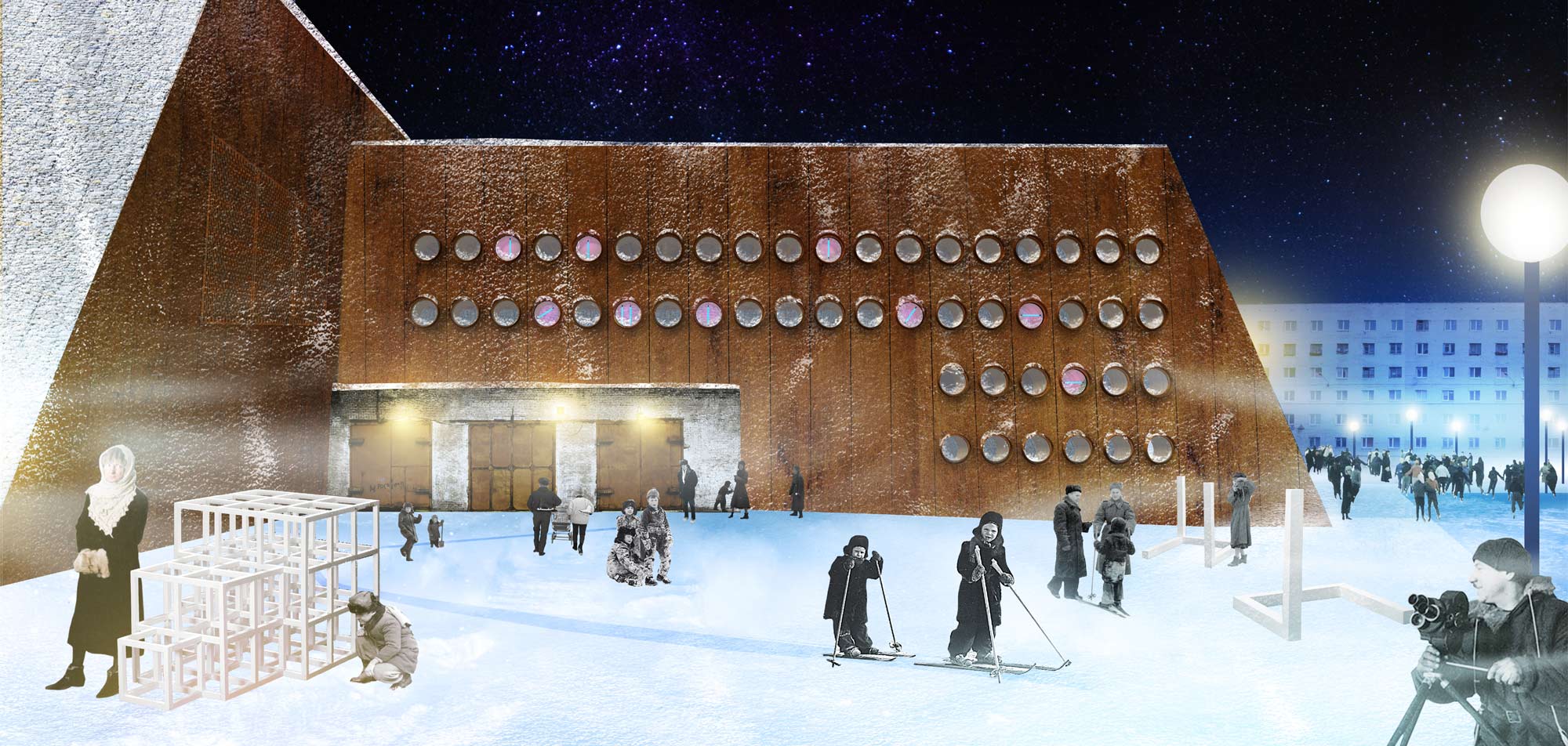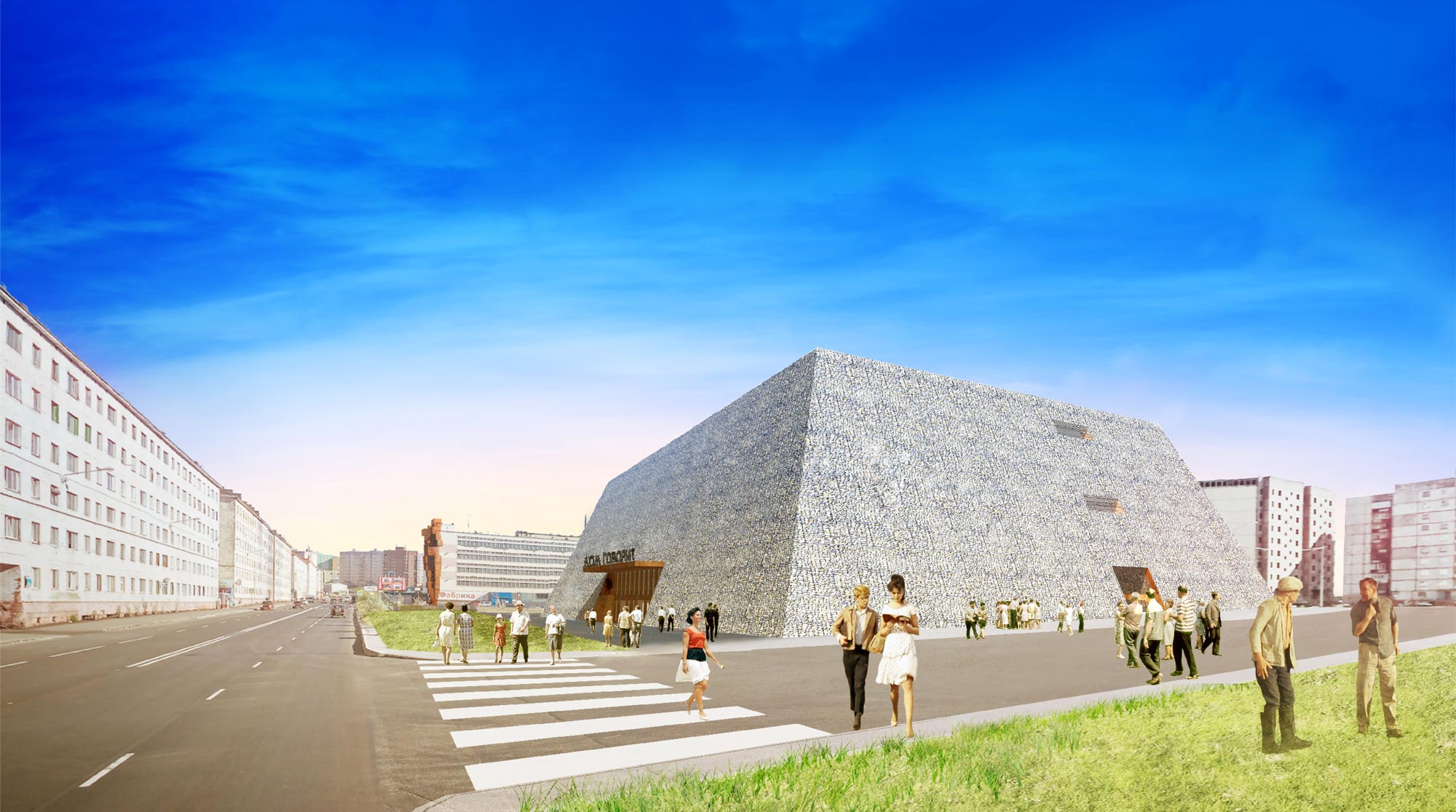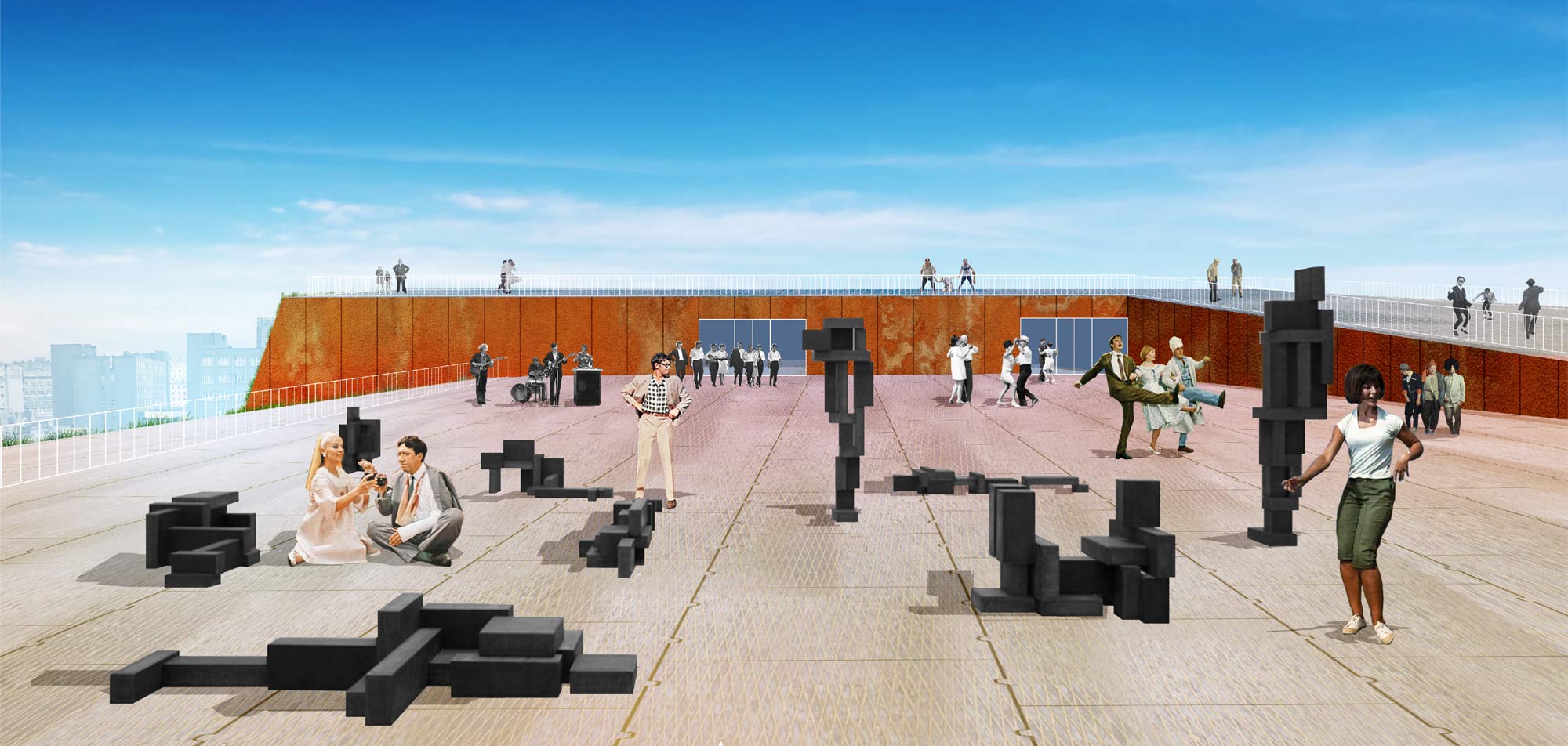POSLEZAVTRA architects participated in an architectural residence in Norilsk, within which the concept of the Arctic Museum of Modern Art was created.
METAPHOR AND MORPHOLOGY
Shuba (rus. "fur coat") (1) is the most stable and well-established anthropogenic surface, ideally suited to the conditions of the Far North. You can even say that Shuba is the face of Norilsk architecture. Without it, it's practically unimaginable. However, it has never occurred to anyone to use the amazing “formal” properties of Shuba to the fullest. In our case, Shuba becomes a site-specific architectural metaphor, within which a transformation takes place: we wrap the building with a thick coat of gabions, turning it into a mountain/ hump/ snowdrift on the edge of the city. We fill up the house of trade – we dig out AMMA. Or – the house of trade falls asleep – AMMA wakes up.
The table mountains of the Putorana Plateau, including Mount Schmidt (2), the closest to the city, towering above Norilsk, are the most characteristic part of the surrounding urban landscape, which forms a pool of visual links. The emergence of a man-made mountain in the city is a memorial and almost sacred gesture, filled with respect and gratitude of the territory. It is full of stability and solidity, and the form has, in fact, natural monumentality, which seems to be absolutely necessary for the future museum, or the museum of the future.
Schmidt mountain photo author: Vitas Beneta
